Microfluidics is an advancing technology that enables controlling minute liquid quantities. A wide range of innovative devices in biotechnology have been fabricated using microfluidics. These devices include control structures, wells and channels made from materials such as silicon, glass or polymer.
Zeta-200 Automated 3D Metrology System
The Zeta-200 Automated 3D Measurement System offers true color imaging of complicated surfaces in less than one minute per site.
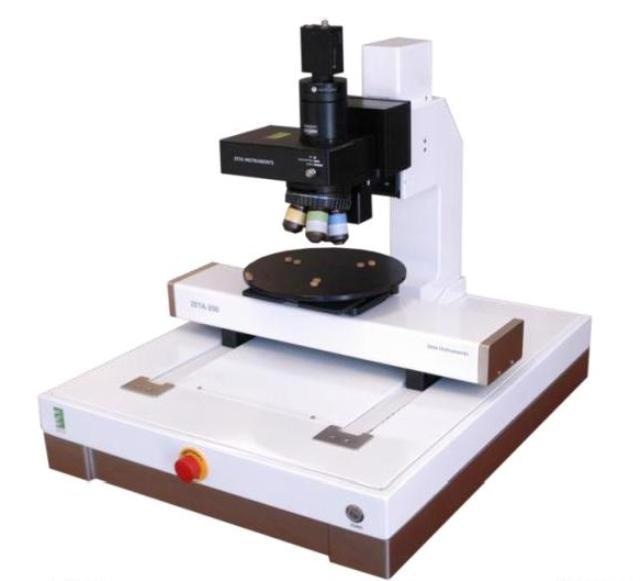
The parameters analyzed by the Zeta 3D Software for 2D or 3D images include the following:
- Step height
- Surface roughness
- Feature size, diameter, area, and volume
- Multi-surface analysis for transparent features
- 3D surface visualization
- Statistics
The Zeta-200 Automated 3D Measurement System can be used for the following purposes:
- Multi-site measurements with statistics
- Recipe-based measurement definitions
- Automated data and image export
The salient features of the Zeta-200 Automated 3D Measurement System include the following:
- High-brightness white LED light source
- XY stage with 200mm x 200mm travel
- 30mm total vertical travel
- Multiple FOV configurations available
The Zeta-200 Automated 3D metrology system is capable of measuring microfluidic devices that comprise the following:
- Transparent cover plate
- Transparent substrate
- Channel
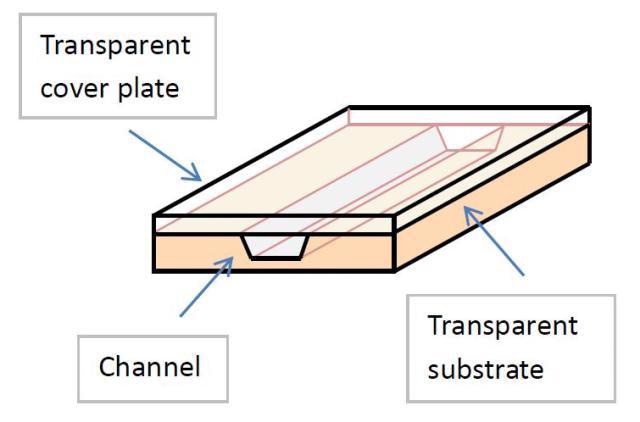
Features of Microfluidic Devices that can be Imaged
Using the Zeta-200 Automated 3D Metrology system, it is possible to analyze and image features of the device. The possible applications include the following:
- See through transparent layers to image wells.
- Determine measurements from sub-micron to over a millimeter.
- Handle high roughness and low reflectivity surfaces.
The software features an Intel Core2 Duo processor with 3GB RAM, 320 GB disk, and widescreen LCD monitor.
Vertical Dimension Analysis
The following figure shows the step height analysis of the open channel.
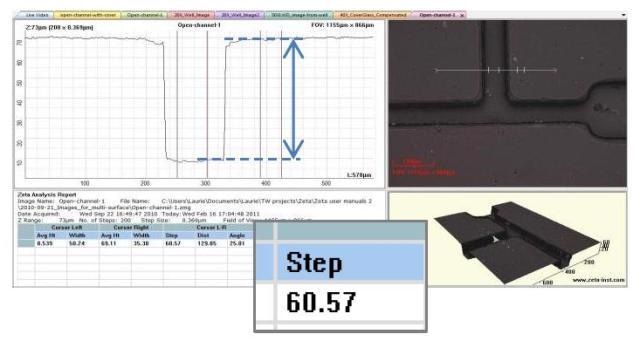
The next figure shows the Zeta image of a similar channel having a transparent cover plate, showing top, middle and bottom surfaces.
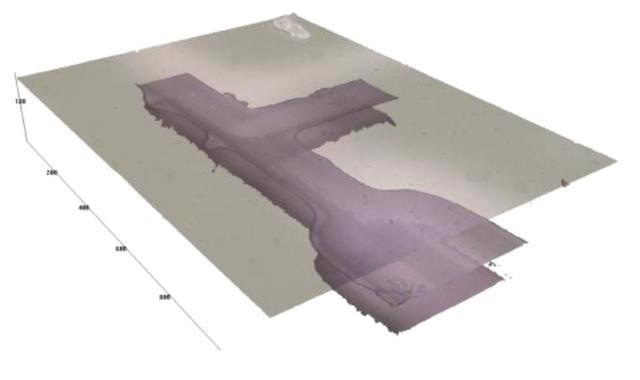
This figure shows a Zeta-200 image of a completely open channel.
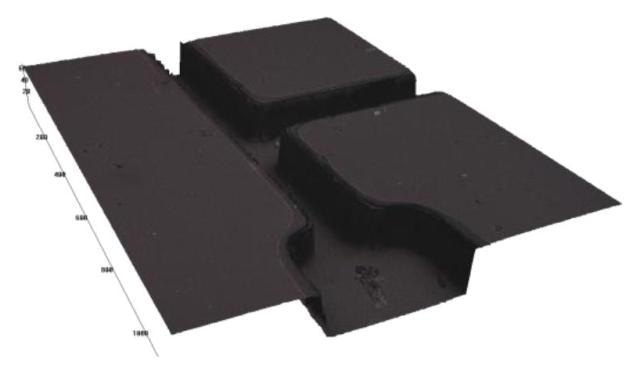
The next figure shows the analysis of the multi-surface image, showing the cover plate thickness (93.4 µm) and channel depth (59.2 µm).
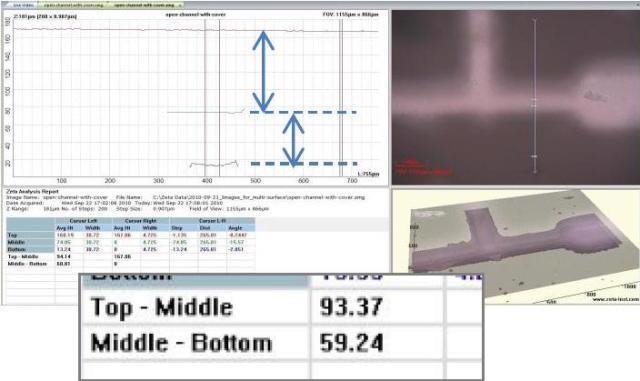
Lateral Dimension Analysis
The figure below shows the analysis of a structured microfluidic channel, showing the heights of two adjacent pyramid structures.
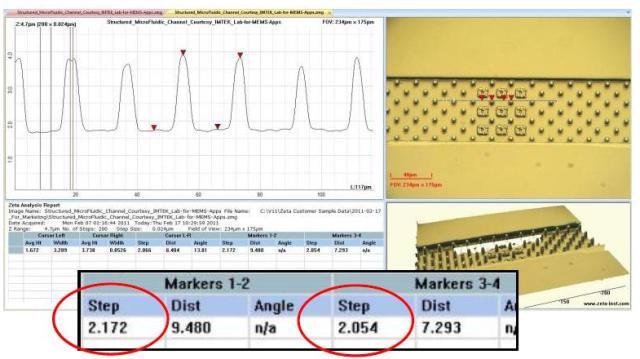
Image courtesy of IMTEK, Laboratory for MEMS Applications, Freiburg, Germany.
The next figure shows the analysis in the X and Y dimensions of an open well structure next to a covered channel. The well outer diameter is 505.4 µm, inner diameter 310.5 µm, and the channel width is 102.9 µm.
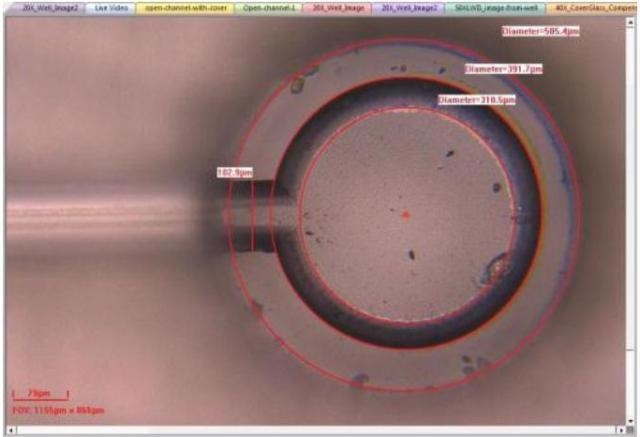

This information has been sourced, reviewed and adapted from materials provided by KLA Corporation.
For more information on this source, please visit KLA Corporation.